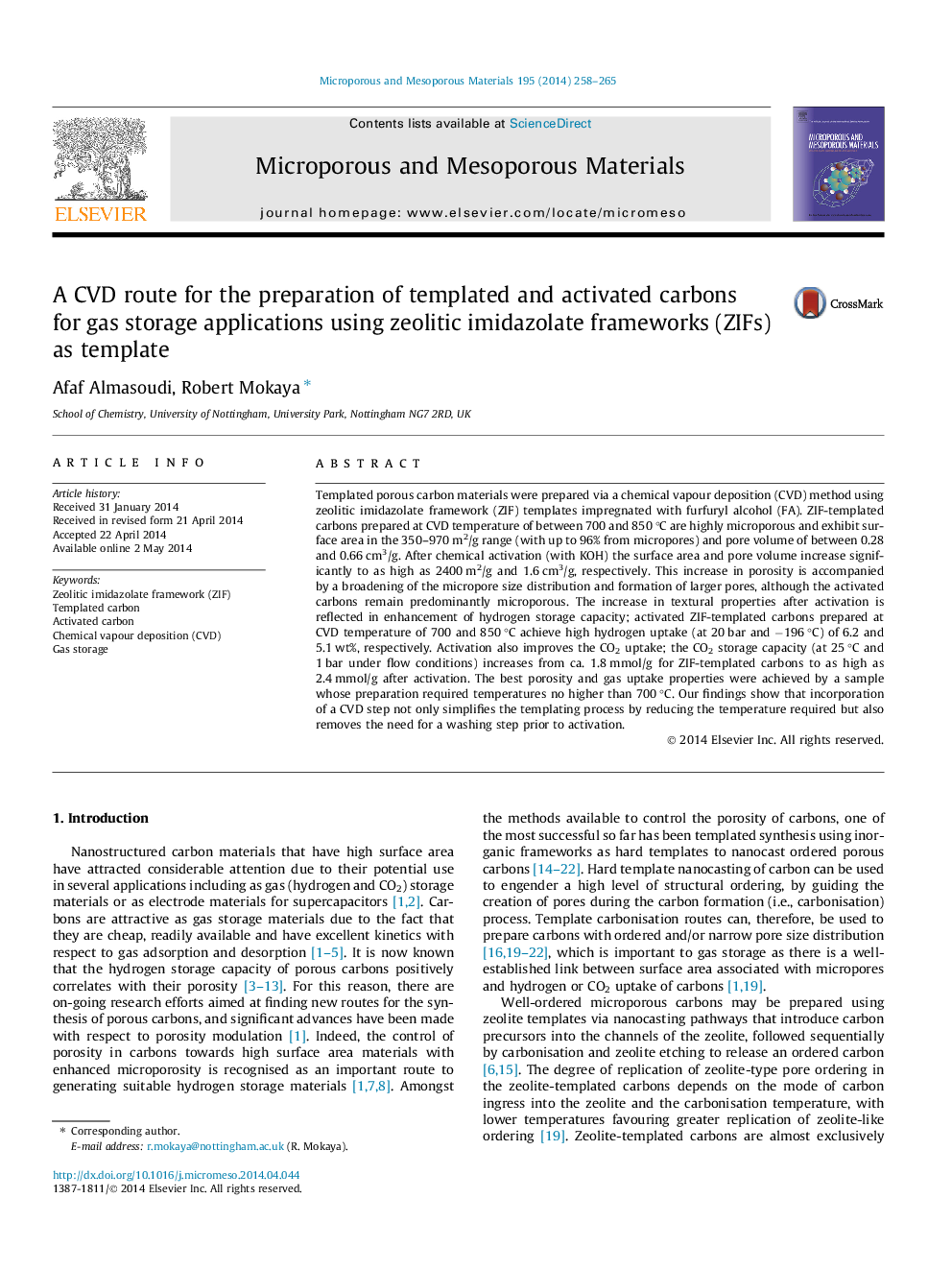| Article ID | Journal | Published Year | Pages | File Type |
|---|---|---|---|---|
| 73119 | Microporous and Mesoporous Materials | 2014 | 8 Pages |
•High yield of highly microporous ZIF-templated carbons are prepared via a CVD route.•Templated carbon obtained directly after CVD; no need for washing to etch out ZIF framework.•Surface area of activated templated carbon up to 2400 m2/g with 82% from micropores.•Activated ZIF templated carbons store up to 6.2 wt% H2 at −196 °C and 20 bar.•CO2 uptake up to 2.4 mmol/g (at 25 °C and 1 bar) and exceptional storage density up to 4.5 μmol/m2.
Templated porous carbon materials were prepared via a chemical vapour deposition (CVD) method using zeolitic imidazolate framework (ZIF) templates impregnated with furfuryl alcohol (FA). ZIF-templated carbons prepared at CVD temperature of between 700 and 850 °C are highly microporous and exhibit surface area in the 350–970 m2/g range (with up to 96% from micropores) and pore volume of between 0.28 and 0.66 cm3/g. After chemical activation (with KOH) the surface area and pore volume increase significantly to as high as 2400 m2/g and 1.6 cm3/g, respectively. This increase in porosity is accompanied by a broadening of the micropore size distribution and formation of larger pores, although the activated carbons remain predominantly microporous. The increase in textural properties after activation is reflected in enhancement of hydrogen storage capacity; activated ZIF-templated carbons prepared at CVD temperature of 700 and 850 °C achieve high hydrogen uptake (at 20 bar and −196 °C) of 6.2 and 5.1 wt%, respectively. Activation also improves the CO2 uptake; the CO2 storage capacity (at 25 °C and 1 bar under flow conditions) increases from ca. 1.8 mmol/g for ZIF-templated carbons to as high as 2.4 mmol/g after activation. The best porosity and gas uptake properties were achieved by a sample whose preparation required temperatures no higher than 700 °C. Our findings show that incorporation of a CVD step not only simplifies the templating process by reducing the temperature required but also removes the need for a washing step prior to activation.
Graphical abstractFigure optionsDownload full-size imageDownload as PowerPoint slide
